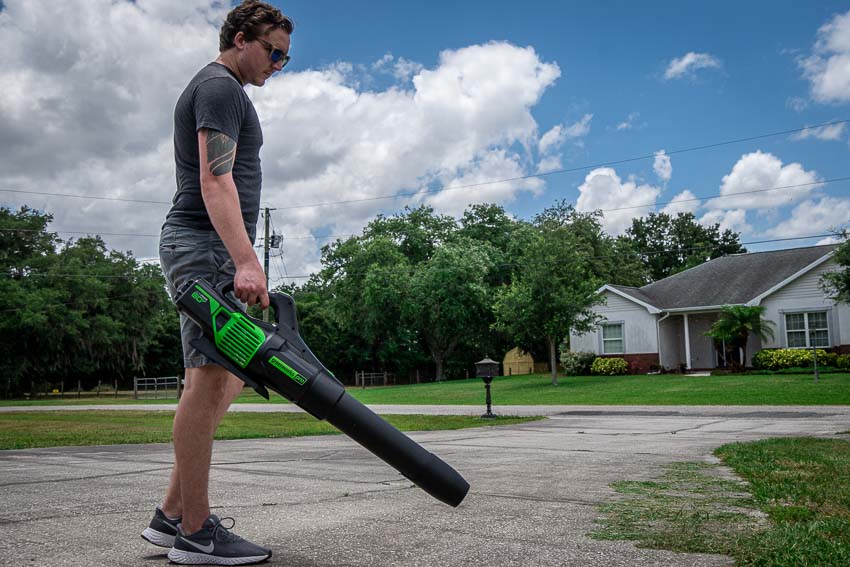When You’re Comparing Leaf Blower Performance, Look For Newton Force
Nearly every blower has ratings for airflow (CFM) and airspeed (MPH), but how do you know which one is more important? The leaf blower CFM vs MPH conversation goes beyond those two metrics. If you’re not already familiar with it, it’s time to get to know Newton force.
Leaf Blower CFM vs MPH: Which is More Important?
To start, let’s dive into airspeed and volume. You’ve probably heard the claims of blowers with 225 MPH and others with 900 CFM. Which is better for work? The real answer? Both.
Airspeed (measured in MPH) is what you need to get an object moving. Just like the speed of your car, it’s a measure that tells us how far that air would go in an hour if it maintained its speed. The higher the airspeed, the heavier an object you can convince to move.
Cubic feet per minute (CFM) is a measurement of the volume of air a leaf blower can produce at wide-open throttle (WOT). The measurement tells us how much space in cubic feet you can fill with air in one minute. The higher the CFM, the larger the area your blower effects and the better you can keep objects moving.
You need both to make the most efficient use of your time. If you have high MPH and low CFM, you can get pebbles, mulch, and other large debris to move, but it won’t go very far away from the nozzle.
On the other hand, high CFM and low MPH will move dust and dried grass well, but won’t have much effect on heavier debris.
Leaf Blower CFM Vs MPH: And the Winner is… Newtons
Let’s talk about Newtons. No, we’re not talking about the fig kind, this is all about force. The formal definition says that one Newton equals the force required to accelerate an object with a mass of 1 kilogram 1 meter per second per second. OK, now that we cleared that up, let’s make some sense of it.
Newton force combines speed and air volume into a single metric we can measure. Another way to think about it is that Newtons tell us overall blowing force. When it comes to comparing blower performance, it’s a single number that tells you how much work you can expect the blower to accomplish.
However, you can’t just plug CFM and MPH into an equation and get Newtons out. It’s complex and involves temperature, humidity, pressure, and other factors. It’s far easier to simply measure Newtons than calculate them, and it’s something we test and report in our blower reviews.
And here’s the cool thing: more brands are beginning to include Newton force in their specifications, making it that much easier for you to compare which leaf blower is the best one for your needs.
Like the blower in our featured image? It’s the Greenworks 60V Pro 700 CFM model. Read more about it here or buy it here.



